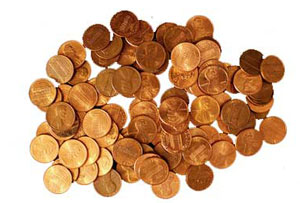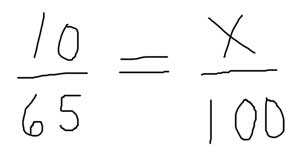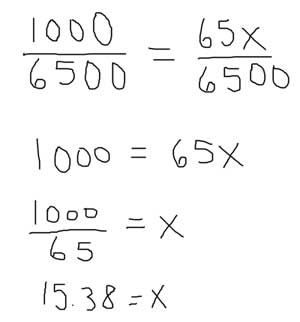
Each penny is 1% of a dollar.
Percent comes from the Latin words “per cent”. That means “out of a hundred,” like there are 100 cents in a dollar. So “ten per cent” means ten out of every hundred. A dime is ten percent of a dollar. A dollar is ten percent of ten dollars.
If we say that 50% (fifty percent) of people are women, that means that fifty out of a hundred people are women, or half of the people. If we say that 100% of people have hearts, that means that all of them have hearts.
To calculate a percentage for yourself, you need to understand how to multiply fractions and simplify equations. Suppose you have sixty-five seeds, and ten of them have gone moldy. Say you need to know what percentage of the seeds went bad. First write your problem as a fraction: 10/65: ten out of sixty-five seeds went bad.
Now you need to know how much that would be out of a hundred, so set it up as an equation:

To solve this equation and find out what x is, you’ll need to find a common denominator for your two fractions. Just use 6500 (65×100). Remember to multiply the numerators by the same amount as the denominators! So you get:

Percentages can also be more than 100 percent. If you planted ten good seeds, and they grew into a hundred peas, you’d have 1000% of your original seeds back, or ten times as much. If you weigh 100 pounds, and your little brother weighs 50 pounds, you weigh 200% as much as he does, or twice as much.
More about Decimals
More about Fractions
Bibliography and further reading about numbers:




